P&G's David Taylor: A Corporate Leader Far Ahead of the Curve
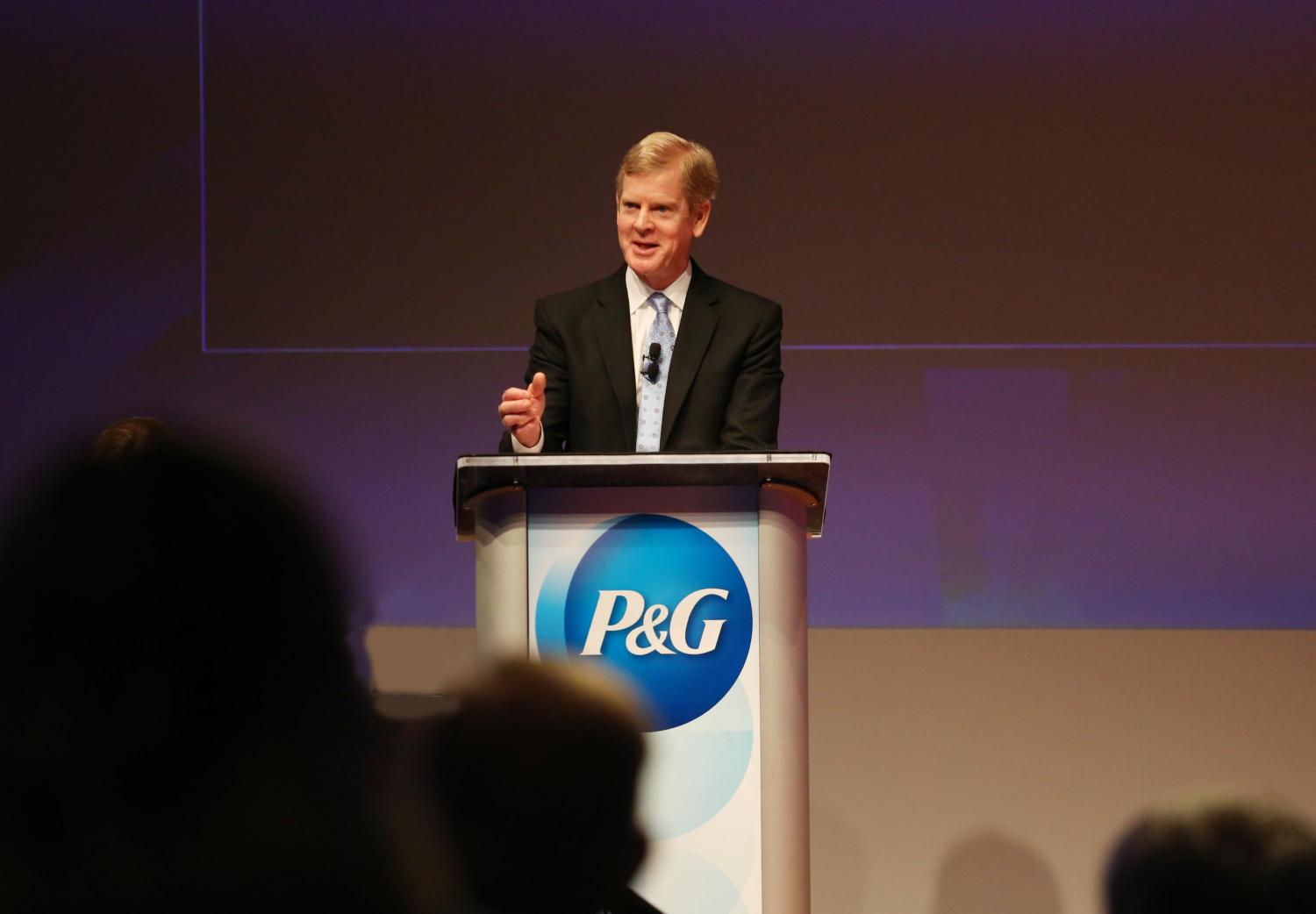
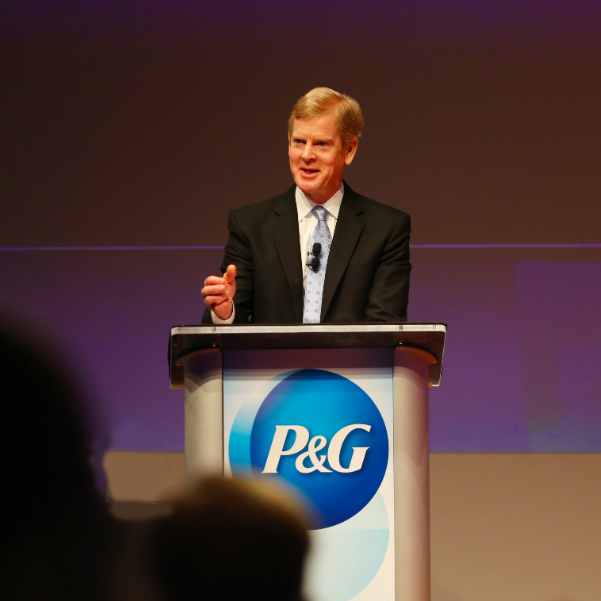
Employees and customers increasingly expect companies to take the lead in solving today’s most pressing environmental and social problems. David Taylor, CEO of Procter & Gamble, is one U.S. corporate leader who is far ahead of the curve.
During his 30-plus years at P&G, colleagues have described Taylor as a man with a reputation for always doing the right thing. His leadership style has made him known as a chief executive with whom people want to work, and he has cemented his legacy with an excellent track record of bringing together the right mix of people, ideas and solutions that, in the end, can make the difficult actually possible.
Let’s start with Taylor’s role in developing circular-economy solutions, a task not easy for someone leading a company that uses many forms of plastic to store and preserve almost all of its products. He stepped up to this challenge with his current chairmanship of the Alliance to End Plastic Waste, a group that includes almost 30 major global and regional companies that work together to develop and scale up answers that can help curb the use of single-use plastics.
Taylor agreed to chair this group as he realized companies across the entire plastic value chain must come together in order to coordinate efforts and investments in plastic recycling. Now, the group strives to integrate modern recycling technologies with the necessary strategic investments in collection and sorting practices, which often vary from region to region. His priority on leading reflects his belief that it will require more than one person, one company, or one idea to solve the massive challenge of plastic accumulating on our land and in our oceans.
Advances in technology can not only make the circular economy possible, but from Taylor’s perspective, it can also help people reach their potential. “I believe we will use technology more and more to execute repetitive tasks, which will unleash the creative capabilities of people,” he told CR Magazine.
Another challenge Taylor has not been shy about addressing is diversity and inclusion. He was one of the early signatories of the CEO Action for Diversity and Inclusion pledge, which now includes 600 CEOs committed to ensuring diverse teams and inclusive workspaces.
From Taylor’s perspective, diversity and inclusion is not simply a checkbox that must be marked off to satisfy compliance—it can create a competitive advantage. “I am most proud of the many high-achieving, diverse teams I have had the privilege to lead over my 39 years with P&G,” Taylor told us.
Under his leadership, P&G is fostering workplace conversations that can lead to greater empathy and a more trusting environment in which all employees feel not just welcomed, but also empowered to discuss some of the most emotionally charged topics that center around diversity and inclusion.
Previously published in CR Magazine - you can read more about the other 2019 Responsible CEO Award winners here.
Image credit: P&G
Want Consumers to Help Solve the Plastic Crisis? Offer Sustainable, and Fun, Choices

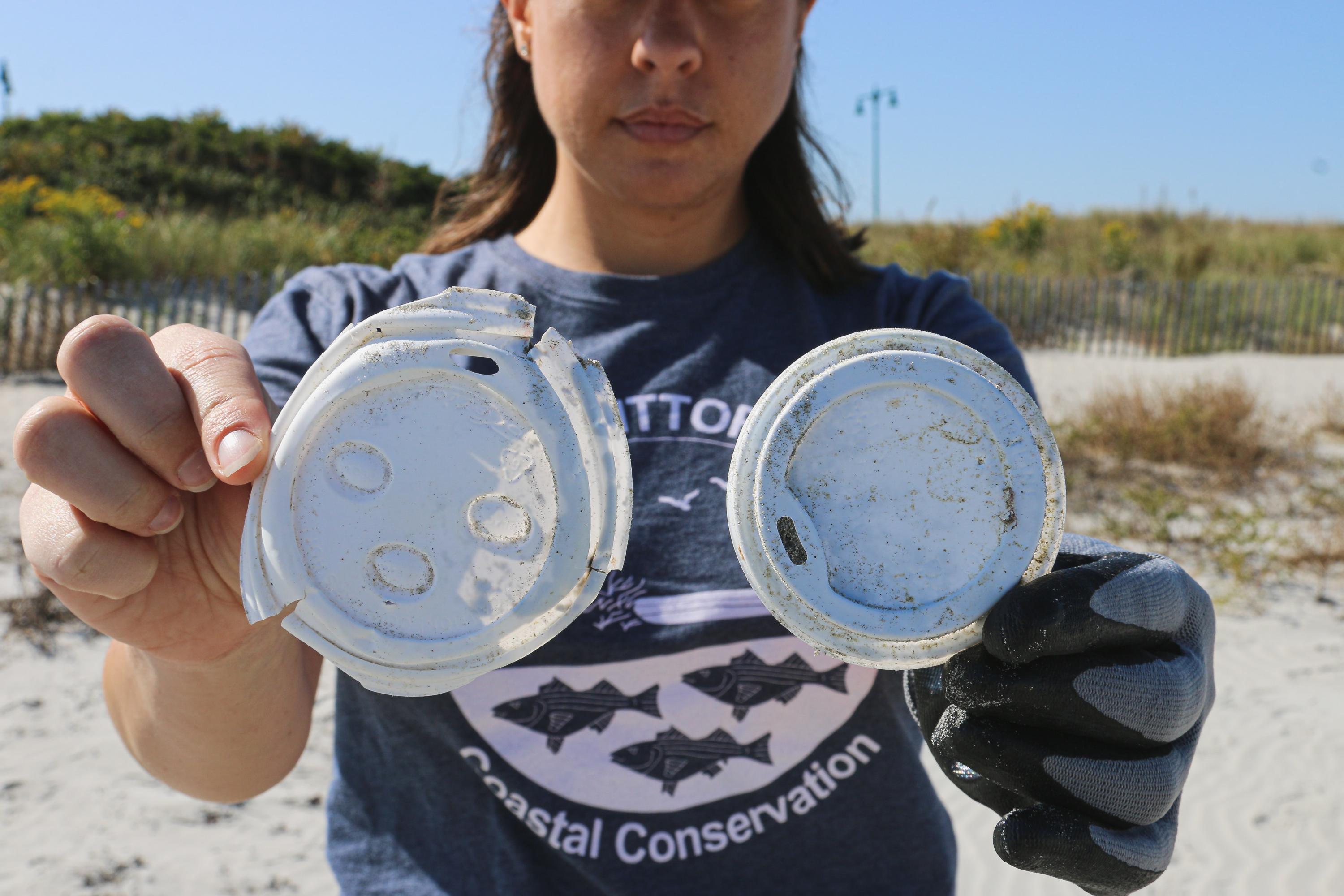
Masses of plastic in the Pacific, straws in turtles’ nostrils, microplastics contaminating soil, water, food… These are just a few images from the plastic crisis that have motivated people to take action in recent years. They also paint a picture that has causes many to become discouraged, even uncertain or stressed about how to act.
Consumer action matters for an issue like plastic when 42 percent of plastic produced globally in 2015 was for packaging.
But while an increasing number of individuals are designing zero-waste practices into their lives, not everyone feels so empowered to transform their habits and diminish their carbon footprint. The reality is that nearly half of adults feel overwhelmed by environmental messages. And while 65 percent of consumers in one study have shown a desire to buy from brands with sustainability at their core, only 26 percent actually have done so.
It’s no wonder people want brands to help them make the right choices. A whopping 88 percent of people in the United States and the United Kingdom want companies to help them make environmentally and ethically sound choices. Only 28 percent of respondents to that same 2018 survey believed companies were succeeding.
A new type of sustainable brand: one that’s nonjudgmental
That’s where brands like Repurpose Compostables come in. Repurpose entered the scene almost a decade ago with the first line of compostable, plant-based tableware — products like hot and cold cups, plates and bowls and assorted utensils. The brand first entered stores like Safeway and Walmart, and that was on purpose. Repurpose positions itself to make choosing a sustainable option light and easy.
The company doesn’t supply to restaurants or cafes or sell exclusively in green grocery stores as it aims to intentionally bring sustainable solutions directly to the stores where people shop on a daily basis.
“We're realists’ brand. We're not here to yell at people to stop using disposable products. We're here to create an alternative for them to use today, not in the future,” Corey Scholibo, co-founder and chief marketing officer of Repurpose Compostables, told TriplePundit in recent interview.
“80 percent of consumers say they'll use a green product if it’s not inconvenient. And that means I'm using disposable. I’ve got kids; I've got places to go; I've got things to do. Don't yell at me about my coffee mug all day. I forgot it; I lost it; I left it on the subway. I don't want to pay a whole lot more.”
This strategy of ease and accessibility has been paying off. Two years in a row, Repurpose was placed on Inc.’s list of the fastest-growing private companies in the U.S. It’s difficult to pinpoint exactly what leads to great success in business, but surely considering the needs of the customer doesn’t hurt.
Why so serious? Fun and ease mean effective communication
Repurpose’s philosophy is that more people living imperfectly sustainable lives is better than a few achieving zero-waste carbon neutrality. Small adjustments and simple choices make a difference and help turn individuals in the right direction.
And that’s where the heart of Repurpose’s work comes in. As people continue to choose Repurpose for its reliability, affordability and compostability, the company hopes to build relationships with its customers and start a conversation. For the founders, anti-plastic advocacy is the foundation of all their work.
“We are evolving the category and our branding beyond the traditional idea of green,” Scholibo said in a press release. “At our core, we’re an anti-plastic activist brand, but we use a positive, accessible approach to combat climate change, so consumers don’t shut down. Now more than ever, it’s vital to maintain a sense of humor and optimism. Why can’t fighting climate change be fun?"
Being consumer-facing helps Repurpose in its activism. The thinking is that, unlike cafes that go through thousands of disposable cups and plates a day and don’t care about the innovation behind the materials and design, individuals and families think carefully about what they bring into their homes.
Repurpose’s new website launched in November with only four drop-down menus, one of which is “Learn.” There, people can see the impact of their actions. To date, Repurpose’s customers have helped the brand keep 3,531,805 pounds of waste out of landfills; they’ve also prevented energy use and CO2 emissions.
Helping customers make the right choices to take on the plastic crisis
Today, the company’s branding matches its lighthearted principles. Repurpose’s packaging no longer bears simple serious green leaves — the traditional icons of sustainable brands. Instead, straws declare “These Straws Don’t Suck,” and plates recommend “Cut the Cake.”
For years, Repurpose’s products were the only compostable and plant-based options in the disposable housewares aisle; and now, they will only pop with joyous color and patterns.
While Repurpose’s message is mostly fun and games, its commitments are serious. Part of the company’s promise is to keep bringing innovative solutions to its customers. When straw bans were popping up across the states, Repurpose was already ahead of the curve – the company had launched its compostable straw just three months earlier.
Keeping its finger on the pulse of customer needs, the company recently unveiled its first reusable plant-based products. The line is starting its messaging by communicating with parents of small children.
Lauren Gropper, founder and CEO of Repurpose, had the idea when she couldn’t find plastic-free, break-proof, microwavable dishes for her young children. She mused, “Could we use this incredible technology that mimics the functionality of plastic but has no toxins and can be put in the microwave?” she said during her talk with 3p.
Gropper says eventually she hopes her company will have a full line of compostable and reusable products that suit a plastic-free lifestyle. Whatever the future holds, she says the company will continue to “provide people today with what will be in the future” and make it as accessible as buying it off the shelf.
Environmentalism is serious business. And there are plenty of organizations and individuals taking it seriously. Lawmakers are passing progressive bills, activists are speaking out for change, innovators are discovering groundbreaking solutions. With pervasive problems like plastic, though, not everything can be done perfectly. Repurpose shows its customers that it’s ok to do what can you can right now and feel good about it. The company has found its own spot in the sustainability picture, and that niche is filled with the joy and foresight that can actually make a difference and resonate with customers.
Image credit: Brian Yurasits/Unsplash
Tesla's Outlandish Cybertruck Redefines the Notion Of a Pickup
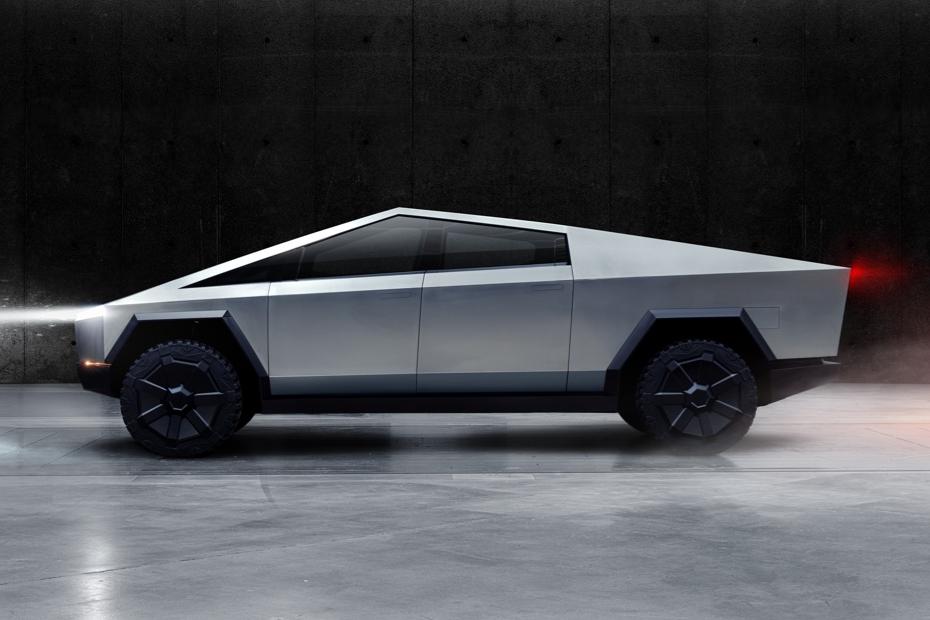
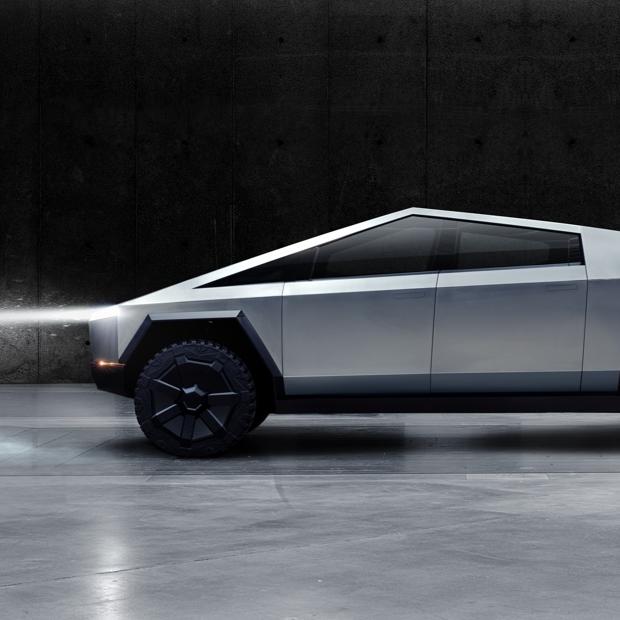
Watching the livestream of Tesla’s unveiling of the new Cybertruck in Los Angeles last Thursday evening, it was hard not to keep wondering - from the moment the vehicle rolled on to the stage, until the moment Elon Musk walked off following his presentation - whether or not Musk was punking the entire world.
So outlandish is Tesla’s new vehicle, that judging by social media comments, gnawing away in the back of many people’s minds during the reveal was the refrain, ”is this a joke?” At any moment it seemed plausible Musk would say, “just kidding” and the real Cybertruck would fall from the sky or something.
The Cybertruck is no joke
But no, it turns out it was not a joke. The vehicle you see pictured here is indeed the long awaited pickup truck that Tesla has been promising. Pre-launch, artists impressions had suggested we should expect an appearance of a familiar Tesla-styled front end with a flatbed grafted onto the rear, but such images had clearly led everyone astray. In reality, the Cybertruck has completely blown up the Tesla design language - and indeed forces us to rethink the very concept of what a pickup truck actually is.
Spending some time to let the visual onslaught marinate a bit though, perhaps allows the mind to shift a little from, “what the hell is that?” to something rather more accommodating.
It’s never been Tesla’s mode of operation to be bound by convention. The company’s tenacity to bring a fledgling EV car company building a limited production two seater roadster a little over a decade ago, to what is now a mass production automaker today, has not occurred by following a conservative playbook. And so, because we expect a pickup truck to look a certain way, in line with every pickup truck ever, it does not mean to say a superior utility vehicle can’t be conceived in an entirely different package.
A tough all-electric pickup that can compete with Ford
Love it or hate it, the statistics are impressive.
The Tesla Cybertruck is, of course, fully electric. It will come in three variants, at three price points. The base model comes with a single motor rear wheel drivetrain and starts at $39,900, will travel 250 plus miles per charge and Tesla says it can go from zero to 60 mph in less than 6.5 seconds. This is a very respectable entry level spec-sheet at a real-world price, and not out of whack in the utility truck market segment.
Up one notch, a $49,900 higher performing dual motor version sits in between the base model and the $69,900 top-of-the-range tri-motor, all-wheel drive flagship Cybertruck. Here’s where the real action is - zero to 60 mph in an astoundingly rapid 2.9 seconds, while achieving over 500 miles on a single charge. Range anxiety begone!
Musk asserts the Cybertruck melds Porsche 911 performance with the utility of a Ford F150 and though some will, without question, buy this for whatever image it portrays, this vehicle is not positioned merely as a styling exercise. It’s designed to be a proper workhorse.
In the truck segment, a performance figure even more important than horsepower and acceleration, is towing capacity. Here too the Cybertruck steps up.
The base model is capable of towing a very respectable 7,500 pounds, which is pretty much comparable with Ford’s base model F150 - not only America’s best selling pickup, but best selling vehicle outright. The top specification tri-motor Cybertruck, though, can tow an astounding 14,000 pounds, which is to say 800 pounds more than the F150’s most capable version, the F150 Raptor.
And yes, $69,900 is pricey, but considering the F150 Raptor itself starts at over $54,000 it’s not a stretch to make a compelling economic case. After all, since the F150 gets just 18 miles per gallon on the highway, over the life of the vehicle, the electric Cybertruck quickly closes down the gap in the lifetime cost of vehicle ownership in fuel savings alone.
Tesla is challenging convention with the materials they are using, too, seemingly to impress upon prospective buyers that the Cybertruck is indestructible. The ultra-hard stainless steel exoskeleton was demonstrated during the reveal to be impervious to denting when hit with a sledgehammer. A couple of big whacks on stage rendered no damage. Video footage also showed body panels can resist a 9 mm bullet impact. Here Musk quipped it was redefining “tough” - a dig, no doubt, at the F150’s “Built Ford Tough” tagline.
It must be said, however, running contrary to this narrative, there was one key fail on stage - toughness wise. As for the armour glass windows tested in front of the audience and supposedly able to withstand a steel ball bearing being thrown at them somewhat embarrassingly, failed twice to actually resist shattering - a bit of an “oops” moment! Musk laughed it off, and in any case, there’s time to fix this before production starts in 2021.
Still, beyond these demonstrations of brute force, potential buyers may place more importance on some of Tesla’s other areas of focus. One practical feature is the incorporation of self leveling suspension to counter cargo weight and towing sag. Cybertruck also comes equipped with a liftgate that unfolds all the way down to the ground, thereby acting as a useful ramp.
Creature comforts prevail, too. On the inside, there’s room for six people to travel in the roomy cabin - 3 per row - while the now familiar central tablet-like control screen also adorns the Cybertruck’s dash. Tesla’s driver assist technology is of course standard, and a $7,000 optional extra self-driving capability is promised as well.
Nevertheless, overwhelming all of these practical details is the question as to whether Tesla will be able to sell this thing, looking like this? Though Elon Musk pitched the Cybertruck against the capabilities of the Ford F150, an equally, if not more relevant, comparison should be drawn with the much anticipated $69,000 Rivian electric truck - which, when it is released, will come with quad motors, put up similar performance figures - and still look like a pickup truck.
Don't forget about Rivian
It’s hard to predict which of these electric trucks the market will prefer; Tesla has a lot of devotees and Rivian to date is unproven, but will people embrace Cybertruck’s radical design? Since we’re two years away from it beginning to roll off production lines, it’s not impossible to imagine that while the overall design won’t deviate drastically to what we’re seeing here, it may however soften somewhat, (perhaps to meet regulations for crash performance or pedestrian safety) and look a bit less like an armored vehicle. Though perhaps by then, in any case, our eyes will have adjusted to find this design concept perfectly acceptable, and see conventionally styled pickups as old hat. \
And if that’s the case, Tesla may have just played its next move in the chess game. While established manufacturers are right now bringing out some great EVs; vehicles which derive inspiration in both form and function from Tesla like the Ford Mach-E we reported on recently, Tesla meanwhile might just be saying - we’ve already moved on over here now - keeping one step ahead in the EV game!
Image credit: Tesla
It's Time For Companies To Move Beyond Purpose


This summer, 118 CEOs signed a letter agreeing that executives need to look beyond maximizing shareholder profits and think about how their companies can benefit all stakeholders. Over the next several weeks, this redefinition of purpose in the business world sparked a long discussion over the role that companies should have in society—as in one that commits to people, communities and the planet, or the more conventional approach, which focuses solely on Wall Street’s quarterly earnings expectations.
It’s clear to leaders at the public relations firm Porter Novelli where the company stands on purpose. Since opening its doors in 1972, this agency has worked on a bevy of campaigns that were far ahead of their time. The list is long: In 1975, Porter Novelli helped launch the First New York Bank for Business, which was founded to help serve the financial needs of women entrepreneurs. Other campaigns include the National Cancer Institute’s Five-A-Day Program for Better Health; a 1998 “truth” campaign that ended with the largest single-year decline in teen smoking across the U.S. in 20 years; and the viral-video-inducing ALS Ice Bucket Challenge.
“Purpose is in Porter Novelli’s DNA and core to our heart,” said CEO Brad MacAfee. “It is critical to our agency—which works diligently to help organizations find, live and tell their greater ambition in order to positively impact society —that we are authentic in our own approach.”
It’s not enough for a company to define its purpose, however. It’s up to that organization’s leadership and employees to ensure such efforts are more than skin deep, or they risk being labeled as inauthentic.
“With purpose taking center stage in the C-Suite and among marketers, we run the risk of purpose-washing and thinking of purpose as solely an emotional brand campaign that talks about a company’s values,” observed Alison DaSilva, Porter Novelli’s executive vice president of corporate social responsibility and purpose. “We believe that companies need to not only find their purpose, but also live and tell their purpose each and every day.”
From DaSilva’s perspective, a company’s purpose must guide its everyday business practices and inform its relationships with stakeholders. Purpose has to permeate throughout everything a company does, from how its products are packaged to how it manages day-today engagement with employees. In the end, such an approach can not only help a company evolve, adapt and innovate, but also thrive by becoming a positive force for society.
At its core, corporate purpose isn’t about how to cope with the realities of conducting business in the here and how—it’s about keeping an eye to the future. More than 75 percent of U.S. consumers now expect businesses to have a positive impact on society that goes beyond turning a profit, according to a recent Porter Novelli survey. The changing demographics of the U.S. workforce, evident as younger baby boomer and older Gen X workers approach retirement, means that future employees will increasingly expect employers to share their values.
“Looking at a company’s purpose is increasingly part of the decision-making set not only in terms of what to buy, but also decisions like where to work, what to invest in, and which companies are operating in local communities,” said Whitney Dailey, Porter Novelli’s vice president of marketing, research and insights. “This is particularly the case with millennials, and now we’re seeing Gen Z with equally strong convictions. These demographics want to work for and buy from companies that share their values.”
In other words: Today’s workforce is increasingly vocal about what matters to them, and the way companies respond to the hot-button issues of the day will directly affect their reputations.
If they hope to attract the best and brightest, now is the time to lead by example. “There is an expectation from millennials and Gen Z that they won’t have to check their values at the door when they enter the workplace,” DaSilva added.
It’s clear that purpose can become a strong source of competitive advantage for companies, as more executives realize purpose can drive long-term strategies, differentiate a company from its competitors, and maintain trust and engagement among employees.
Previously published in the Autumn 2019 edition of CR Magazine.
Image credit: Timon Studler/Unsplash
Fasten Your Seat Belts: Formula 1 Racing to the Carbon Neutral Finish Line


Last week, Formula 1 (F1) announced an ambitious plan to become net-zero carbon by 2030; in addition, all F1 Grand Prix races will be “sustainable” by 2025. This is a significant announcement, considering the sport produces well over 250,000 tons of carbon dioxide each year across its ten teams and 21 races. That is the equivalent of the annual electricity use by approximately 45,000 homes in the U.S. The target will be met through a number of different initiatives, including:
- 100 percent renewable energy at F1 offices, facilities and factories.
- Elimination of single-use plastics.
- Recycling or composting 100 percent of all waste.
The biggest changes, however, will be in the vehicles themselves. F1’s goals include a plan to develop car engines into carbon-neutral power units with increased efficiency and the use of synthetic fuel that can capture carbon.
F1 has long been at the forefront for technology development. One little known fact about F1 cars is that they are already up to 20 percent more efficient than the standard road vehicle. Technology is a cornerstone of the sport, with continuous improvements to efficiency and aerodynamics; while such innovations are not intended initially for the reduction of emissions, they do have a knock-on positive effect.
Travel and logistics are responsible for the bulk of Formula 1 emissions—nearly three-quarters of all emissions, in fact. There are over 20 races a year, and moving the cars and equipment is a huge undertaking, not to mention travel of race personnel and spectators. In 2020, there will be a record 22 races, with nine in Europe and the remaining 13 spread out across world, including the U.S., Australia, China, the Middle East and Brazil. Formula 1 aims to boost efficiency and opt for low- or zero-carbon options wherever available. Whatever cannot be replaced in the sustainability plan will have to be offset.
An argument could be made that Formula 1 draws its boldness from the environment in which much of its fan base is located. The bulk of its teams and races are in Europe. The European Union has had a carbon emissions trading scheme since 2005 and is the home to the Paris climate accords, with many individual member countries pursuing ambitious climate goals.
For a sport that is based on fossil fuels, Formula 1’s goals are a bold statement, putting the organization at the forefront of sustainable racing initiatives. NASCAR has had a sustainability program called NASCAR Green, in place for over a decade and focusing on things like fuel and tire recycling, blended fuels and some renewable energy. IndyCar has similar initiatives and made a move toward hybrid engines like those being developed in F1. Another recent development in racing is Formula E, an all-electric race circuit, which is acting as a test bed for electric vehicle technologies in race cars. Seeing whether F1 incorporates any of these electric technologies remains to be seen.
Formula 1’s plan is the latest in a string of announcements from businesses, notably those within the sports and entertainment industry, taking the lead on curtailing climate change. This initiative can serve as an example for other sports and organizations that achieving climate goals is possible. If the sport with the fastest race cars in the world can do it, couldn’t anyone?
Image credit: Nick Fewings/Unsplash
This Partnership Is Recycling Contact Lenses – 16 Million, In Fact


When we think about what contributes to microplastics in our waterways, plastic bags and single-use packaging come to mind. However, there is another product often overlooked: contact lenses.
Americans use more than 3 billion contact lenses a year. Of those, 45,000 pounds of them end up in our waterways as one out of five Americans flushes them down the toilet – and even more end up in landfills. Both water treatment plants and standard recycling systems cannot process the contact lenses due to their size and malleability, as explained last year in The New York Times.
The good news is that there is a more sustainable option—as in the One by One Recycling Program, in which consumers here in the U.S. can responsibly dispose their contact lenses and packaging such as blister packs and top foils.
The One by One Recycling Program offers more than 4,000 drop-off locations across the United States for consumers to dispose of their used contact lenses and packaging. The program was born from a partnership between TerraCycle, the U.S. recycling and upcycling company that has long repurposed hard-to-recycle post-consumer waste, and Bausch + Lomb, the 166-year-old eye health products company.
One by One, more contact lenses are ending up in recycled products
Once the consumer disposes his or her lenses and associated packaging in a recycling bin at a participating location, the waste is sent back to TerraCycle. From there, the contact lenses are separated from the blister packs. Then, the contact lenses and plastic components of the blister packs are melted and made into recycled products; the metal layers are recycled separately, according to Terracycle.
Most recently, the One by One Recycling Program contributed to the manufacturing of training materials, including benches, tables and agility ramps, which in turn are donated to the Guide Dog Foundation, a nonprofit that trains guide dogs for the blind and visually impaired.
“Before the One by One Recycling Program, contact lenses were one of the forgotten waste streams that were often overlooked due to their size," said Tom Szaky, CEO and founder of TerraCycle, in an interview earlier this month with Invision Magazine. “Together, we are helping to preserve our environment and transitioning these materials back into the world in a positive way – it’s a win-win for all.”
Since its inception in 2016, the companies behind the One by One Recycling Program said they have collected 16 million used contact lenses, blister packs and top foils. In an interview with TriplePundit, Bausch Health Companies’ Kristy Marks explained that the program’s leaders plan to scale the number of U.S. drop-off locations through exploring partnerships with retailers outside of the eye-care industry as well as growing the number of participating eye-care professionals.
Consumers are showing more interest in recycling used contacts
Additional companies are launching their own contact lens recycling programs. Johnson & Johnson has launched a recycling program for its branded contacts in the United Kingdom through a different partnership with Terracycle, while CooperVision is testing a similar program in Sweden.
As the daily disposable contact lens market share continues to grow at 9 percent annually—the fastest-growing segment of contact lenses—more consumers are showing an interest in recycling their contact lenses. For example, one study found that 77 percent of British contact lens wearers would recycle their contact lenses if they could.
“Patients are pleased to hear about it during their appointments, especially those who wear daily disposable lenses and have expressed concern about the added waste they create,” said Gina Wesley, O.D., from Complete Eye Care, Medina, MN, in a public statement. “I applaud Bausch + Lomb for leading the way in providing this solution for my practice and patients and helping to minimize the waste these materials generate."
Image credit: Hubble/Unsplash
3p Weekend: Could Gen Z Save the Shopping Mall?
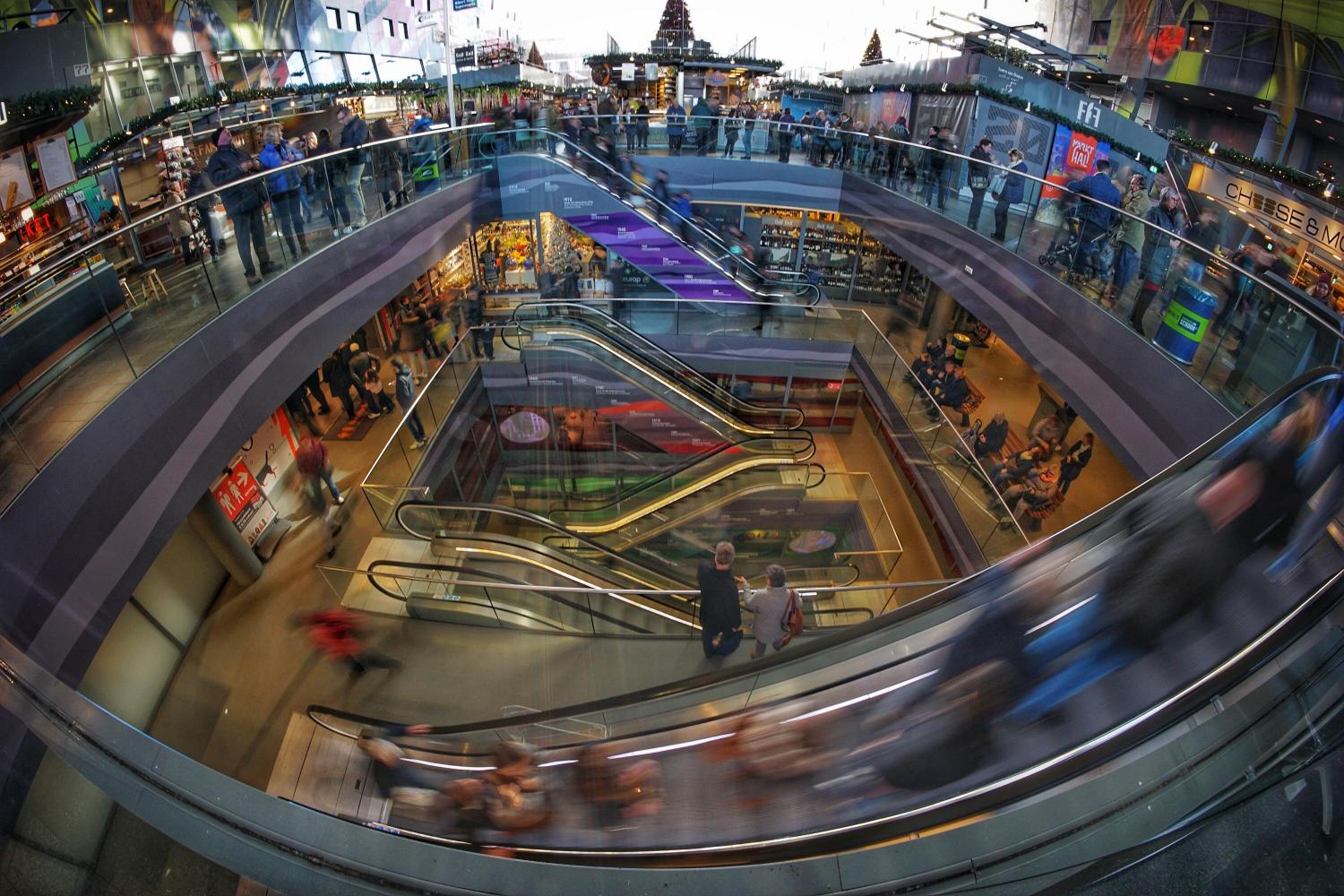

While my fellow millennials and I continue to “kill” everything (most recently the Amtrak dining car), the younger Generation Z may be the saving grace for a beloved American institution – the shopping mall.
Yes, I said the mall: the ubiquitous setting for first dates, music videos, TV shows, movies and even board games from the 1980s to the 2000s.
A new report from The NPD Group said Gen Z – the population born between the mid-1990s and early-2010s – is less likely to shop online than millennial or baby-boomer shoppers this holiday season.
There are several factors driving this group’s shift to the return to brick-and-mortar retailers.
Marshal Cohen, chief industry advisor of The NPD Group, told CNBC in a recent interview that teens and college students – all part of GenZ – view in-store shopping as a social activity and form of entertainment, as well as an opportunity to spend time with family and friends.
And despite this generation’s concern over the environment, that isn’t necessarily a factor in Gen Zers returning to the mall. True, plenty of evidence suggests online shopping exacts a toll on the environment, and more online retailers say they are responding in kind. But even though surveys of Gen Zers indicate they care about the environment, that sentiment didn’t come through when it came to analyzing their day-to-day shopping habits.
In the end, going to the mall offers an experience that isn’t possible when shopping online.
For Gen Z, shopping malls are an escape from reality
Younger consumers are also looking for ways to interact with brands more, as they are still determining their unique style and values. No matter how interactive a website is, you can’t try on or sample a product with the same immediacy as you can in a store. A 2019 survey from A.T. Kearney found that 73 percent of shoppers ages 14-24 like discovering new products in stores.
“The discovery process in stores is a lot more immersive,” said Stephanie Wissink, an analyst with the financial institute Jeffries, in a CNBC interview. “The trial, the try on, the socialization of having others shopping with you.”
In addition to the social and practical benefits, many Gen Z consumers cite mental health reasons for shopping in stores rather than online. According to the aforementioned A.T. Kearney survey, 58 percent of shoppers age 14-24 said “browsing shelves and clothing racks allows them to disconnect from social media and the digital world.” In other words, shopping in person is not only a throwback to earlier times, but it’s a chance to unplug, even if young shoppers are buying items based on what social media influencers advertise.
Retail reality check
It’s important to note that, while younger shoppers are more likely than older generations to shop in stores as opposed to online, brick-and-mortar retail sales and earnings continue to decline.
It’s no secret that American shopping malls have faced harrowing times since internet shopping took off. So far, 2019 has seen the demise of once-popular mall retailers like Payless Shoe Stores, Dress Barn, Charlotte Russe and Charming Charlie. Other giants, ranging from Gap to Victoria’s Secret to Forever 21, have closed significant percentages of their stores this year. Many of these affected retailers focus on fast fashion, hopefully signaling a shift to more sustainable apparel trends.
Many shopping malls are looking for new ways to fill their vacant retail space while drawing in new potential shoppers. Escape rooms, medical offices, co-working spaces, grocery stores and fitness centers are just some of the nontraditional occupants making an appearance in today’s malls.
And just look at this recent Wall Street Journal headline (possibly my favorite headline of the year): “What Does It Take to Get People to the Mall? Drag Queens, Racy Circus Acts and Disco Parties."
Whether or not these efforts to win back shoppers are successful is yet to be determined, but hopefully Gen Z will continue to embrace the “retro” experience of going to the mall.
After all, without shopping malls, we wouldn’t have mall walkers, the classic "How I Met Your Mother" character Robin Sparkles, or – most importantly – mall Santas. And that would make for a very unhappy holiday season, indeed.
Image credit: Dieter de Vroomen/Unsplash
An Editor’s Perspective on Brands Taking Stands: Spotlight on Stars of the 2019 3BL Forum


It’s hard to say who were the stars of last month's 3BL Forum - everyone shined - but we'll share some moments that have stayed with the editorial team.
Trying to select the best moments of last month’s 3BL Forum: Brands Taking Stands – What’s Next was a tough task. The 90-plus speakers who went onstage across two jam-packed days all offered compelling points of view on the how, why and what’s tough about making of the most important decisions companies have to make today.
It’s hard to say who were the stars of the show, but now that three weeks have passed by, I would like to share some moments that have stayed with me.
Brands taking stands: why companies should have started, yesterday
What is clear is that more consumers now, more than ever before, want brands to take stands – especially younger consumers. "They’re few and far between right now, but brands that do this are building a loyalty based on shared values,” said Meredith Ferguson, managing director of DoSomething Strategic. “Not on price point, not on new product releases, just on shared values. And what an opportunity that presents to build a community of like-minded individuals who will be loyal for the long term."
Ferguson later added, “It’s not about just selling your products anymore; it’s about using your power, your platform, your influence to solve the world’s biggest problems.”
And harnessing that power to lift those shared values can help change society, added the author Mona Amodeo, a purpose pioneer who distilled what’s next for corporate and employee activism. "Can brands change the world?” she rhetorically asked the audience of 300-plus people during the gathering in National Harbor, Maryland. “You bet they can, because they can rally people around purpose and around things that matter."
The risk, in taking a stand, however, is that such a call can come across as inauthentic – either in how it’s communicated or implemented. While there was plenty of chatter on how that loaded term, “authenticity,” is often overused (just as “collaborative,” “it’s in our DNA” and “game changer”) the bottom line is that corporate decision makers need to be true to themselves . . . and the same goes for what is driving their companies’ mission.
Just as we’ve always been told growing up, it’s not what you say, it’s what you do.
“Authentic content from companies are in its actions, not its pledges,” said Barie Carmichael, Senior Counselor at APCO Worldwide.
“Authenticity is key. Anybody can be just a cheerleader,” added Mercedes Escala of IBM.
Taking a hard look at our current, and future, workforce
One theme that permeated across this two-day event is how companies have little choice but to rethink how they approach the workforce. True, much of this shift is due to the low unemployment rate, but the reality is that employees are expecting more from the companies for which they work – and are being vocal about their expectations as well. And while just about every company says they are determined to have a more diverse workforce, many of us still witness a scenario where words aren’t met by action when it comes to this challenge.
Take, for example, the commonly heard refrain that it’s “hard” to find diverse talent. "We don't buy that—if you want to find the talent, you'll find it," said Dr. Harry L. Williams of the Thurgood Marshall College Fund.
Furthermore, it’s important to look for new employees in pools of talent that have been long overlooked. Greyston Bakeries, which has had a long relationship with Ben & Jerry’s, described its second chance hiring policy, one that is seamless for applicants: one puts his or her name on a list and then waits for that phone call when an opening occurs. As Joseph Kenner, Greyston’s vice president of programs and partnerships summed up, “We don’t hire people to bake brownies. We bake brownies to hire people.”
Susan Braig, who now runs All Broads Affordable Plumbing, a Connecticut plumbing company staffed entirely by women with criminal justice histories, added to the second chance hiring conversation by asking the audience to think about the worst thing they’d ever done. “Now imagine having to put that on your business card, a job application, or talk about it to an HR person when you're about to be hired,” she said. “That’s what people leaving prison face.”
In a nutshell, Jenny Kim of Koch Industries, with whom I talked onstage, offered this reminder: "It is important to evaluate all employees based on their potential and not on their past.”
Let’s not forget the environment, either
Being the executive editor for this publication for over a year now, one thing I’m proud of is that 3p strives as much as possible to focus on the social side of sustainability. Nevertheless, it’s clear that the environment is important – in fact, the evidence clearly shows more than a sense of urgency: the five-alarm fire is happening now.
"The climate crisis doesn't have shareholder meetings. Biodiversity loss isn't waiting for the next earnings call. It's coming anyway,” said futurist and author Simon Mainwaring (pictured above), who set the Forum’s stage during the first day and was a force of nature (pardon the pun) during the entire event.
With all due respect to the Sustainable Development Goals (SDGs), many speakers, as well as much of the audience, clearly felt that waiting until 2030 just isn’t giving us enough time. Furthermore, this new generation isn’t interested in working for a company that dismisses the risks that climate change is imposing on people and the planet.
Alison DaSilva, Executive Vice President of Purpose and CSR at Porter Novelli/Cone, noted that Generation Z will hold their future employers’ feet to the fire. “Gen Zers are not willing to check their values at the workplace door, so companies need to clearly communicate how they are making an impact to appeal to this driven but discerning generation,” she said.
Hence the climate crisis is changing how we should approach everything, including how we approach disaster relief and recovery. Tiffany Everett, Senior Director of Disaster Recovery at Good360, just laid it out quickly and succinctly: “Stop throwing clothes in a bag and taking it to the local non-profit,” she quipped as she passionately made the case for an approach more focused on long-term resilience when it comes to making donations for disaster relief.
Image credit: 3BL Media
A New Use for Wheat Straw in North America’s First Tree-Free Paper Pulp Mill


With the rising demand for more sustainable packaging products, Columbia Pulp, North America’s first tree-free paper pulp mill, is using agricultural waste—wheat straw—to fill the gap. The company, based in southeastern Washington state, says it uses 70 percent less energy and 75 percent less water than conventional wood pulp mills.
Columbia takes straw left on farmers’ fields after wheat harvests and turns it into paper pulp that is both totally chlorine free (TCF) and FDA-approved for coming into contact with food.
The argument for using wheat straw as a source for various products, going beyond paper to include plastics and even car parts, is based on the fact that conventional methods of disposing wheat straw have their own negative impact on the environment. For example, the annual burning of wheat straw following the harvest creates significant pollution in eastern Washington—45,000 tons of atmospheric emissions per year—potentially contributing to health problems across the region.
Columbia Pulp is the first new pulp mill built in the U.S. in nearly 35 years, according to the company’s CEO, John Begley. Looking at the fields around its mill, Begley saw potential in all of that agricultural waste.
“We are located in one of the top wheat-producing regions in the country,” Begley told TriplePundit. “There are 4.5 million tons of straw grown annually within 100 miles of our mill, which will provide sufficient and reliable quantities of straw for our pulp production for years to come.”
Begley explains that, at one point, burning wheat straw was the largest source of air pollution in Washington state. To address this problem, the Washington State Department of Ecology sponsored research, starting over two decades ago, to find other ways to dispose of the straw. The process Columbia Pulp uses now was a result of those studies.
“Although using straw to create paper products is not new, the process we’re using is new—allowing us to use a waste product and create high-quality, totally chlorine free pulp, using far less energy and water than traditional pulping mills,” Begley told 3p.
The company’s Lyons Ferry Pulp Plant in Dayton, Washington, which opened last month, produces 140,000 air dry metric tons of pulp per year. Because Columbia Pulp produces fiber that goes into packaging, it expects customers will use the product for a wide variety of fiber-based packaging from boxes, bags, labels, wrapping papers and molded fiber products.
Its pulp is also more cost-effective to produce, benefiting both Columbia Pulp and offering a new source of revenue for struggling farmers, Begley explained. “Straw represents a fraction of the price of wood because straw is a residual product left behind after wheat is harvested. It has little nutritional value and is a nuisance that must be dealt with at a cost. What we are offering to the grower is a way to deal with this cost and actually get revenue for it.”
Begley expects Columbia Pulp’s current facility will use 250,000 tons of wheat straw annually.
He also noted that the production of using wheat straw to manufacture paper is more efficient than wood pulp-based materials: “Unlike wood pulping, our process does not use high-pressure boilers or a high water temperature, so the energy costs are also much lower than the traditional pulping process. Additionally, imported non-wood pulps have very high freight rates to deliver to the U.S., so choosing a domestic product reduces transportation costs.”
Image credit: Pixabay
Supply and Demand: The Business Case for Full Transparency
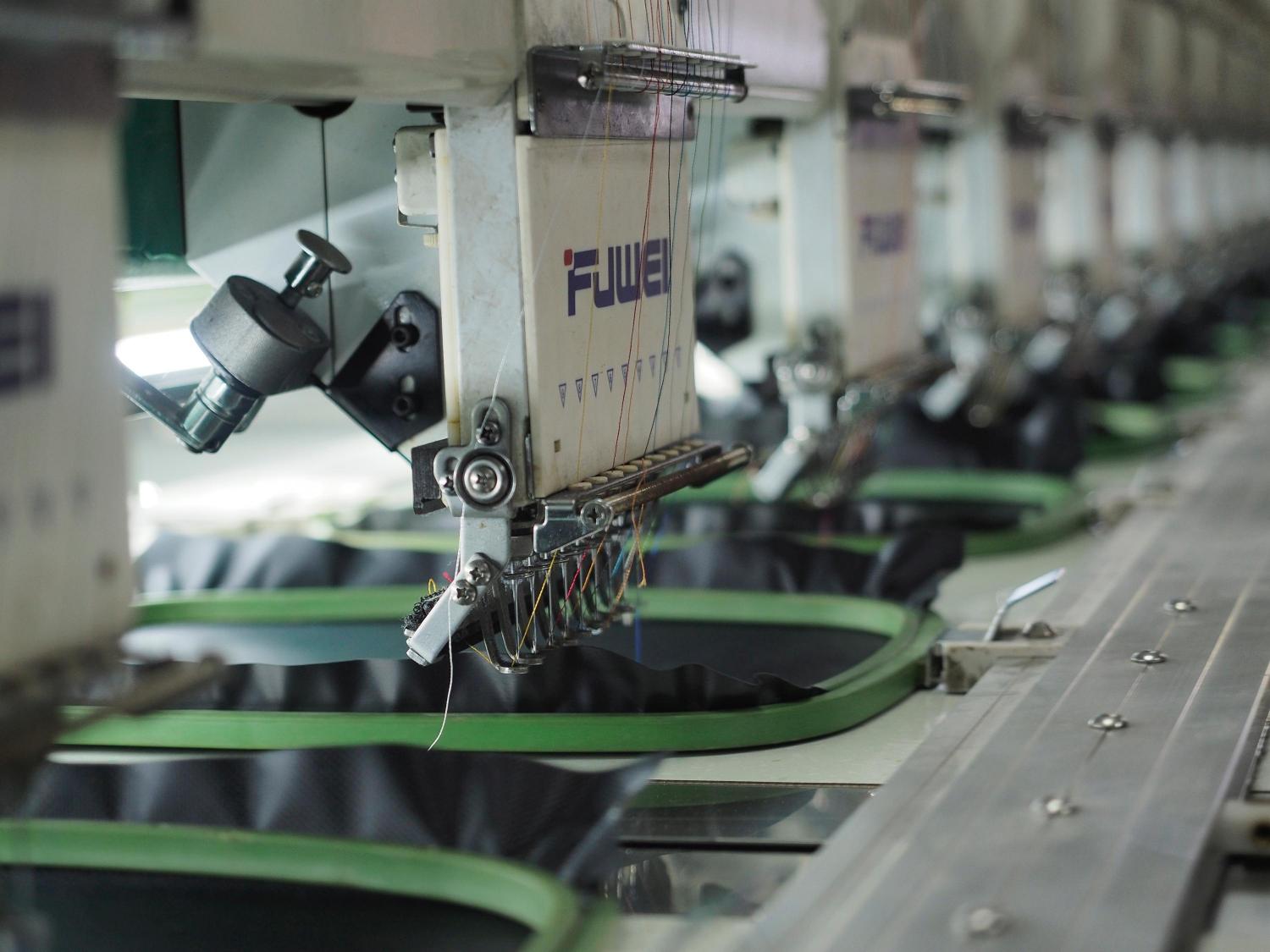

The expectations on companies to be transparent about their ways of working are greater than ever before. Nowhere more so than in the area of supply chain management. In our globalized economy, how businesses outsource as well as purchase often determine the majority of their impacts on people and the planet.
There have been recent high-profile cases where major companies have failed to understand sustainability risks in their supply chains. These include major clothing chains being implicated in child labor scandals and investigations into poor working conditions in factories that supply US tech companies.
These damaging revelations have prompted some of these businesses to change their practices and, in doing so, improve conditions throughout their supply chains. Even more encouraging are the collaborative efforts in the apparel and technology sectors that seek to make change at scale.
What underlines this entire movement is the importance of transparency. The old phrase “you manage what you measure” comes to mind. When you think about supply chains, what is typically measured and managed is price, quality and delivery. Now, responsible leaders are introducing sustainability metrics to the list. And, rather than add a new cost of doing business, many are finding value in respecting communities and the environment.
It’s not simply about improving corporate reputation. Multiple stakeholders want to know about a company’s sustainability track record. Younger consumers, in particular, are backing up words with action. For example, a recent survey of millennials found 73% are willing to pay more for sustainably sourced goods.
Major investors, meanwhile, understand that well-managed companies who report their environmental, social and governance (ESG) data offer better investment opportunities. And their assessments stretch all the way through the supply chain. Recent research found more than 80% of mainstream investors rely on sustainability disclosures to inform decisions.
We’re also seeing a rise in government policies around the world that require businesses to demonstrate supply chain transparency. These include modern slavery legislation and conflict mineral sourcing regulation in the US and the EU, new environmental laws in China, anti-trafficking legislation in the US – to name just a few.
Obviously, it’s easier to assess your own practices than those of suppliers, who are outside your sphere of control and may be geographically diverse. Yet taking environmental factors as an example, the majority of a company’s impacts are often accounted for by suppliers. In some sectors – such as financial services, food, telecommunications, retail and automotive – it’s more than 90%.
Because businesses are increasingly judged and compete on the basis of their ESG performance, the companies that demonstrate they have sustainable and responsible sourcing stand out from the crowd.
To achieve this, a business must employ a robust ‘supplier responsibility’ program, which included internal and external disclosure of their impacts. And this is where ESG reporting, following globally accepted standards, becomes essential.
The GRI Standards, the world’s most widely used sustainability reporting framework, is the starting point for any company – irrespective of sector, size and location. GRI’s Procurement Practices Standard, for example, focuses on how an organization can support their local suppliers, building a complete picture of impacts throughout the supply chain.
GRI recognizes that joining the dots between corporate reporting and the practical changes needed to promote transparent supply chains can be challenging.
To help businesses share experiences and learn from their peers, GRI is launching a Business Leadership Forum on strengthening supply chain reporting.
This new two-year program, which gets underway in 2020, will seek to:
- Establish clear links between supply chain management and reporting;
- Enable more effective disclosures on supply chain performance;
- Improve understanding of supply chain impacts and how to manage them.
The Business Leadership Forum will support companies in developing a roadmap for sustainable supply chain management, identifying, measuring, managing and disclosing all ESG impacts. This in turn can incentivize their suppliers and providers to disclose and improve their own sustainability performance.
The program will involve a series of regular meetings and group sessions, both virtual and in-person. It is open to all companies and participants will have opportunities to co-design the agenda so that the focus is targeted to their needs.
On a personal note, I have worked in the supplier responsibility space in previous jobs – both within companies and in an industry collaboration. It is one of the most impactful areas to drive sustainability benefits at scale. In my current role leading GRI, I look forward to engaging with this group to help bring together the catalytic forces of transparency and supply chain management.
When companies and sectors get this right, it’s a win-win situation. Our actions can help countless people and advance environmental sustainability, while helping businesses grow, attract investment and be successful in the global marketplace.
Previously published on Medium and the 3BL Media newsroom.
Image credit: Agto Nugroho/Unsplash